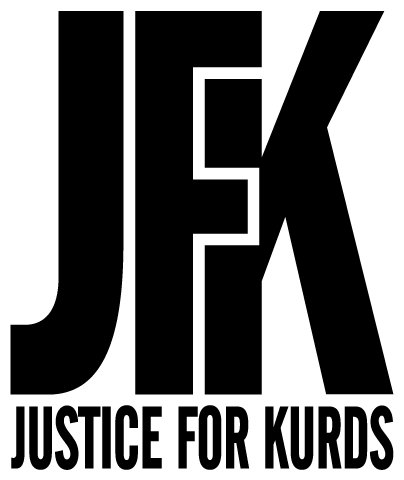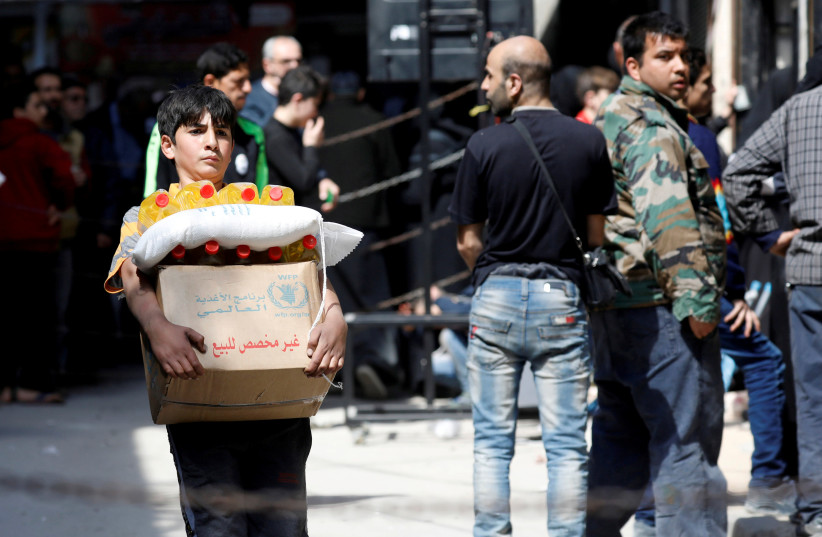Aid is used as a weapon by Damascus and Ankara in Syria.
The US role in eastern and southern Syria is increasingly precarious amid the UN decision to continue cutting off aid to eastern Syria, where American forces are present and the US works with the Syrian Democratic Forces (SDF).
This is an area where the US-led anti-ISIS coalition worked with Kurdish, Arab and Christian fighters to liberate millions from ISIS control. However, Russia, Turkey and Iran have allied to cut off eastern Syria to make sure that aid can only come from Damascus. Turkish-backed groups continue to cut off water to eastern Syria, harming millions.
It looks increasingly like an Iranian-Turkish-Russian plan to strangle and starve eastern Syria until the US leaves and these areas come under the complete control of Damascus.
When the Syrian Kurdish fighters decided to work with the US in 2015, things were very different. The Kurdish People’s Protection Units, with support from Kurdish Peshmerga and others, helped to stop ISIS from taking Kobane. The US and the Kurds worked together to create the SDF, a broader coalition that would go beyond the Kurdish areas of eastern Syria. In 2017, the SDF liberated Raqqa.
Turkey has long sought to force the US to stop working with the SDF, alleging that they are tied to the Kurdistan Workers Party (PKK) and are “terrorists.” But there has been no evidence presented by Turkey of any terrorist attacks from Syria by Kurdish groups.
Turkey used this excuse to invade the Kurdish area of Afrin in 2018 and then Tel Abyad in 2019. This was designed by Ankara’s leadership to force the US to choose between the SDF and Turkey.
Turkish President Recep Tayyip Erdogan, in a dozen calls with US President Donald Trump, pressured Washington to let Turkey take over eastern Syria, promising to fight ISIS. In fact, what happened is that ISIS fighters fled the SDF via Turkey to Idlib, and ISIS leader Abu Bakr al-Baghdadi was found hiding near the Turkish border. US Special Forces killed him last October.
US POLICY in eastern Syria is shaped by several competing agendas. The Department of Defense’s CENTCOM has been close to the SDF, valuing their partnership in fighting ISIS. The US State Department is pro-Ankara and has often worked against the SDF to sideline it. For instance, US diplomats, working to support Turkey, made sure the SDF could not participate in any of the conferences related to a Syrian constitution or at Geneva where opposition Syrian groups gathered.
US Envoy to Syria James Jeffrey told the SDF that America’s work with them was temporary, transactional and tactical, and their future was to work within Syria. This forces the SDF to work with Damascus politically.
At the same time, US security officials told the SDF it would stabilize Syria and asked them to keep hold of ISIS detainees, who they had captured in the thousands. Washington also hinted it would stay in eastern Syria until Iran left.
This has put US policy makers in the strange position of telling the SDF not to work with Damascus because doing so would be working with Iran, while the US also works with Turkey to sideline the SDF, under the theory that Turkey will help the US against Iran.
The US demanded that the SDF and other groups in eastern Syria sever ties with the PKK, putting a bounty on the heads of the PKK in 2018 and supporting a Turkish offensive in 2020 against the party in Iraq. But the US gave the SDF no route to work within a diplomatic system that would see them be part of a future Syria. This political isolation has also led to being left to fend for themselves on humanitarian issues as well.
Since January, UN aid to eastern Syria has been cut off. While human-rights groups deplored this, it was Turkey and Russia that wanted to make sure no humanitarian aid reaches eastern Syria independently. Ankara and Damascus want to use aid as a tool. Damascus trades aid for support.
The US was silent at the UN as aid was cut off in January and again last week to eastern Syria. This forces those in need to get aid via Damascus, thereby boosting Damascus, and thus Iran’s hand, in eastern Syria.
At the same time, the US does not speak out when Turkish-backed groups continue to cut off water to 700,000 people living in eastern Syria. Over the past week, water has been cut off again.
The goal here is clear: Turkey will use the one border crossing that UN aid flows through via Turkey to support groups it works with.
America’s role, despite having a seat on the UN Security Council, has been ineffective in making sure areas it has influence over receive aid and support. This was made brutally clear last week as water was cut off and aid was not allowed to reach eastern Syria.

